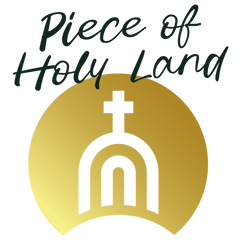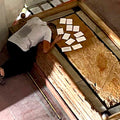Exploring Jerusalem - The Sacred City of Christianity

Jerusalem, often referred to as the “City of Peace,” holds an unparalleled significance in the hearts of Christians worldwide. This ancient city is where the most profound events in the life of Jesus Christ unfolded, making it the epicenter of Christian faith and pilgrimage. For believers, visiting Jerusalem is more than just a historical exploration; it is a spiritual journey that brings them closer to the essence of their faith, allowing them to walk in the footsteps of their Savior and experience the places that have shaped Christianity for over two millennia.
The Church of the Holy Sepulchre: The Heart of Christian Pilgrimage
At the center of Christian devotion in Jerusalem stands the Church of the Holy Sepulchre, also known as the Church of the Resurrection. This sacred church, encompassing both Golgotha—the site of Jesus’s crucifixion—and His empty tomb, is the holiest site in Christianity. Originally built by Emperor Constantine in the 4th century, the church has been a place of worship and pilgrimage for centuries, drawing countless believers seeking to connect with the core mysteries of their faith.
The church houses several key sites that invite pilgrims into moments of profound prayer and reflection:
The spiritual atmosphere of the Church of the Holy Sepulchre is palpable. Each stone and corner of the church resonates with centuries of prayer and devotion, offering a powerful space for believers to meditate on the Passion, death, and resurrection of Jesus Christ.
The Via Dolorosa: Walking in the Footsteps of Christ
The pilgrimage to Jerusalem often begins with the Via Dolorosa, or the “Way of Sorrow.” This winding path through the narrow streets of the Old City is believed to be the route Jesus took on His way to Golgotha. The Via Dolorosa is marked by the 14 Stations of the Cross, each representing a significant moment during Jesus’s journey to the crucifixion.
Pilgrims walk this path, stopping at each station to pray, meditate, and reflect on the suffering, love, and sacrifice of Christ. The experience of walking in the footsteps of Jesus, carrying the spiritual weight of His journey, deepens their faith and understanding of His immense love for humanity. The journey culminates at the Church of the Holy Sepulchre, where the final five stations are located, including the place of crucifixion and the tomb of the Resurrection.
The Mount of Olives: A Sanctuary of Solitude and Prayer
Beyond the Via Dolorosa, the Mount of Olives offers another significant spiritual experience for pilgrims. This historic hill, overlooking the Old City, is rich with biblical significance, playing a prominent role in Jesus’s life and ministry. The Mount of Olives is home to several important Christian sites, including:
The Spiritual Significance of the Olive Wood Cross
For many pilgrims, bringing back an olive wood cross or olive wood crucifix from Jerusalem serves as a tangible reminder of their spiritual journey. The olive tree, deeply rooted in the soil of the Holy Land, symbolises peace, endurance, and the unwavering presence of God. An olive wood cross, crafted from these ancient trees, carries not only the beauty of the land but also the blessings and prayers of the faithful who have touched and prayed over it.
Praying with an olive wood cross, believers can feel closer to the sacred places of the Holy Land, reciting traditional prayers such as the "Our Father" and "Hail Mary" or offering their own personal petitions. These prayers, whether said in a church or at home, unite the faithful with the suffering, death, and resurrection of Christ, and remind them of the enduring love that flows from His sacrifice.
Jerusalem: A City of Unity and Hope
Despite its complex history and the ongoing challenges faced by its diverse communities, Jerusalem remains a city of hope and spiritual unity. It is a place where the faithful from all over the world come to pray, to seek peace, and to encounter the living presence of God. The Church of the Holy Sepulchre, with its shared custody by different Christian denominations, stands as a testament to the possibility of coexistence and the power of shared faith.
The city’s layers of history, intertwined with the narratives of the Bible, create a living tapestry of faith that resonates deeply with every believer. It is a place where the past and present merge, and where the sacred and the everyday meet in a profound and transformative way.
Conclusion: Jerusalem—A Pilgrimage of the Heart
For Christians, a pilgrimage to Jerusalem is not just a physical journey but a journey of the heart. It is an invitation to walk in the footsteps of Christ, to stand in the places where He lived, died, and rose again, and to deepen one’s relationship with God. Whether visiting the Church of the Holy Sepulchre, praying at the Mount of Olives, or carrying home an olive wood cross as a symbol of faith, the experience of Jerusalem leaves an indelible mark on the soul, drawing believers closer to the mystery and majesty of God’s love.
Jerusalem is more than a city; it is the spiritual heart of Christianity, inviting believers to encounter the profound mysteries of their faith and to renew their commitment to follow Chris
SHARE:





















